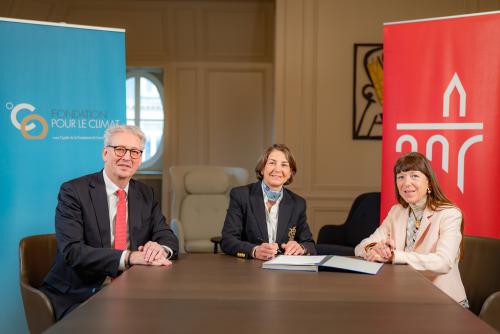-
About Us
-
Donors
-
Foundations & Projects
-
Beneficiaries
-
News
Foundation



Fondation pour le Climat
Under the aegis of Fondation de Luxembourg
Biodiversity & Climate Change
Nature Conservation
Research
Turnover



The Fondation pour le Climat, under the aegis of Fondation de Luxembourg, accompanies external donors seeking to support impactful, pre-selected projects in the area of climate change and biodiversity in Luxembourg and the Greater Region.
Climate change is the greatest challenge facing humanity and is deeply intertwined with all other major global issues, such as poverty, increased inequalities, social tensions, and migration. Today, companies around the world are preparing for the transition to a future net-zero scenario by shifting the energy mix away from fossil fuels and toward zero-emission solutions, and by adapting industrial and agricultural processes.
Philanthropic giving has the potential to further this transition by supporting scientific research and raising awareness, yet global giving in the area of climate change represented less than 2% of all giving in 2022 (ClimateWorks Foundation, November 2023).
In launching the Fondation pour le Climat under its aegis, the Fondation de Luxembourg contributes toward bridging this funding gap by connecting corporate donors with research institutions and nonprofit organizations leading impactful projects in their respective fields. The foundation identifies projects in Luxembourg and the Greater Region across three main themes:
- Awareness-Raising
Education and other awareness creation activities offered in order to spread knowledge and best practice across sectors.
- Scientific research
For example, in the areas of energy efficiency, SMART cities, mobility and innovation in new technologies and CO2 storage.
- Preserving biodiversity and furthering the transition towards a sustainable future
Including promoting new agricultural practices, reforestation, and improving access to renewable energy.
Corporate donors may choose from among the projects pre-selected by Fondation de Luxembourg, or propose a new project, subject to evaluation. To further ensure the quality and potential impact of the pre-selected projects, an external scientific advisory board, composed of experts in relevant areas, will review and analyse each project based on a set of criteria adapted to each theme.

The Fondation pour le Climat is subject to the same governing principles as other foundations hosted under the aegis of the Fondation de Luxembourg, and each funded program is monitored by the experts within the Fondation de Luxembourg.
The mission of the Fondation de Luxembourg is to facilitate long-term philanthropic engagement, therefore the Fondation pour le Climat focusses on projects of a certain scale. For more information, we invite companies wishing to contribute to this initiative to contact the Fondation de Luxembourg.






